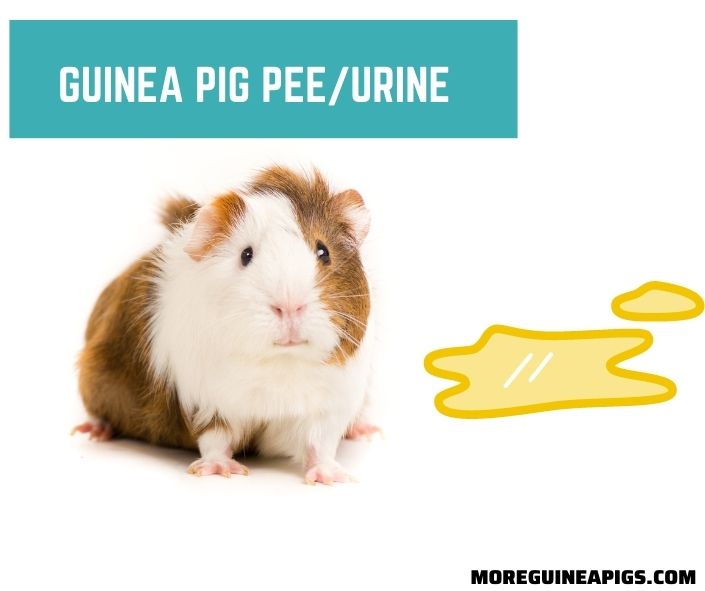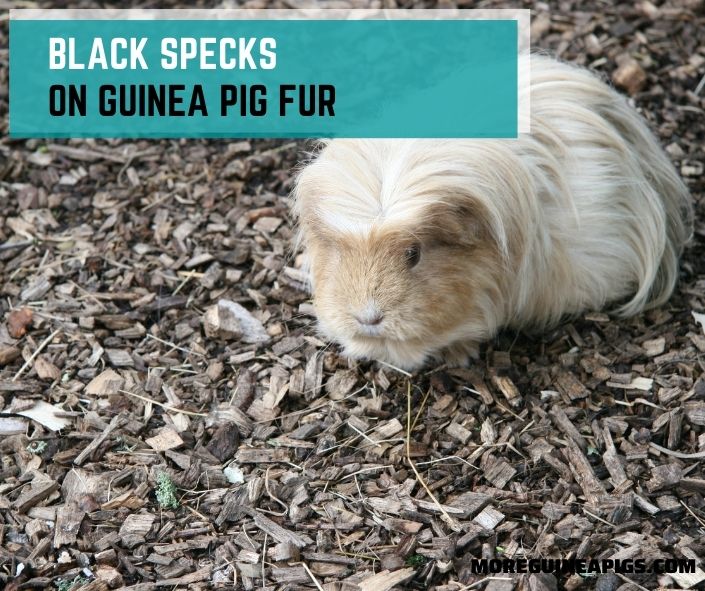Guinea Pig Pee/Urine: Everything You Need to Know
Why should you bother to know about guinea pig pee? Is it important to give a second look at your piggy’s urine or look closely when it’s peeing?
Indeed, it’s crucial to pay attention to the color of your pig pet’s pee. Observing the color of these rodents’ pee is imperative and can tell you when your cavy has a health issue or needs to drink more water.
The color of your pet’s urine can vary depending on its diet and hydration level. Likewise, the two parameters affect how often your guinea pig urinates.
You need to know a healthy guinea pig pee color, and the color that presents warning signs. Let’s get down to the nine different colors of guinea pigs pee and what they indicate.
What Does Guinea Pig Pee Look Like?
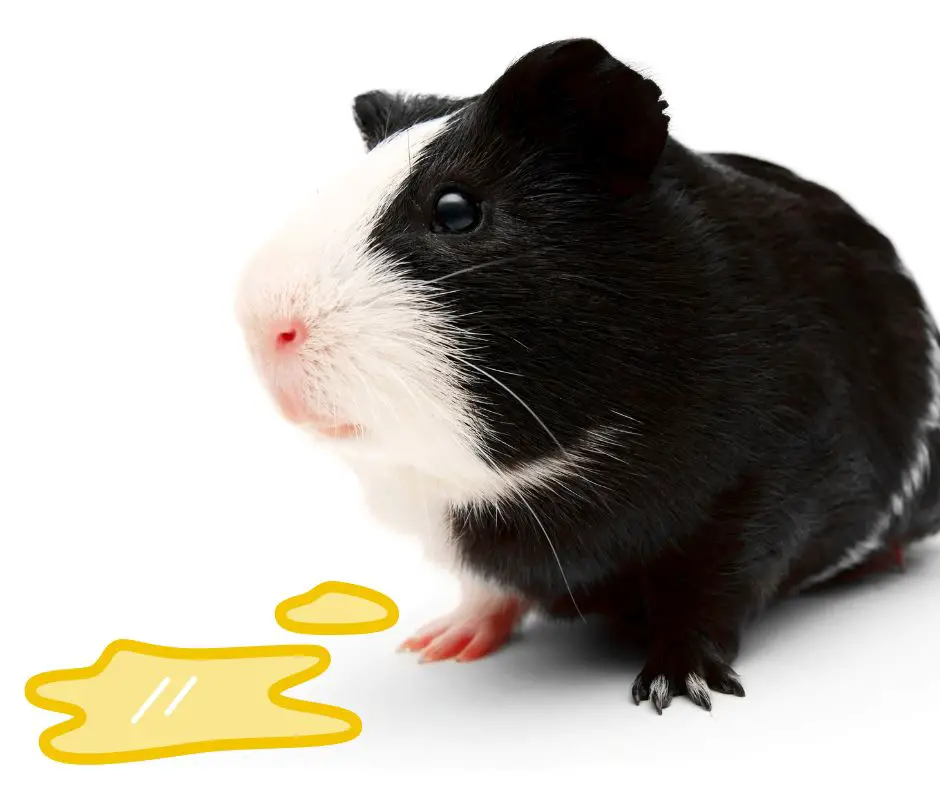
Guinea pigs are constantly drinking water, so their bodies need to process this liquid and eliminate waste materials with urination.
A healthy guinea pig should pass watery urine, not cloudy, sludgy, or with bits. Anything different from clear urine signifies an issue that demands your attention.
While these cavies can urinate different pee colors, normal urine is pale or bright yellow. However, it’s also common for guinea pigs to egest a cloudy pee.
It’s not an alarming sign but the cloudiness from calcium carbonate excretion. If you suspect unusual color in your cavy’s urine, provide some white sheet or towel for the pig to pee on it.
You can easily spot the urine’s color on a white substance. Moreover, a guinea pig’s urine is powdery in texture upon drying but not grainy. Please wait for the urine to dry; rub some between your fingers to determine its texture.
Is Guinea Pig Pee Toxic?
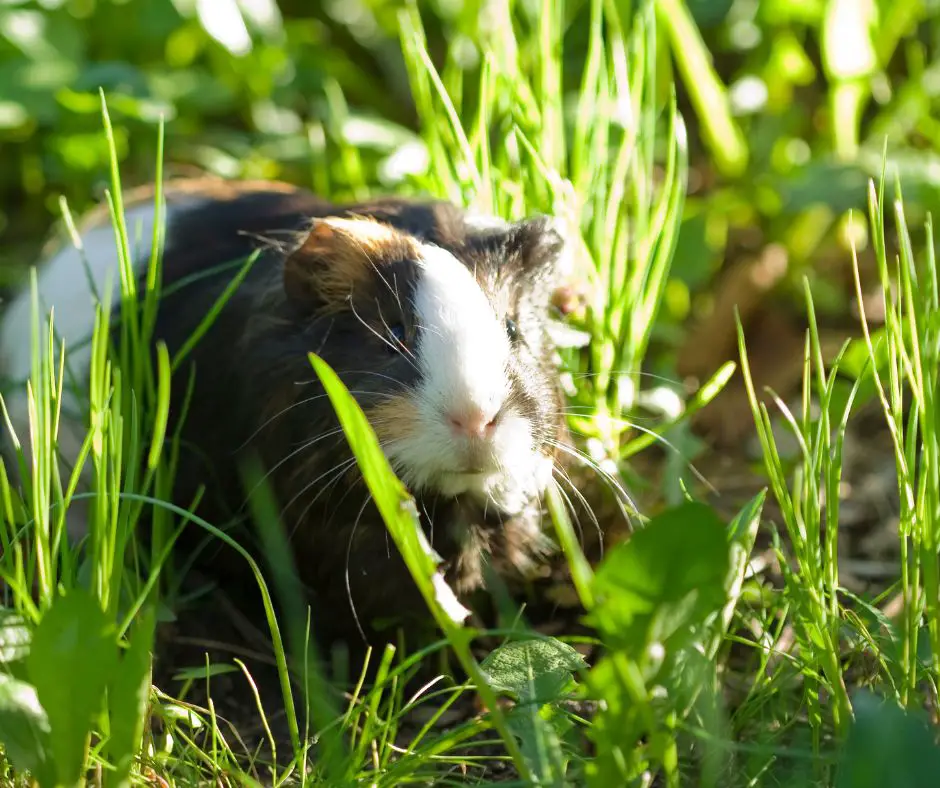
Guinea pigs pee may emit a foul odor, leaving many caretakers worrying if the urine may be harmful. The smell may be offensive, but guinea pig urine will never harm you; it’s not toxic to humans.
Don’t worry if your pig pees on you or you want to feel the texture of your rodent’s pee after it dries out; you can safely handle it. However, don’t handle the urine thoughtlessly since sometimes it may contain parasites.
Guinea pigs are susceptible to Encephalitozoon cuniculi (E. cuniculi), which is a protozoan parasite that affects the kidneys and nervous system.
The immune system of these cavies can fight this parasite, but they remain to be its carriers and transmit it through urine.
Severely immunocompromised people are vulnerable to E. cuniculi, and they can develop the disease if they handle infected urine. Handle all urines with strange colors and appearance carefully.
How often Should Guinea Pigs Pee?

If you are a guinea pig caretaker, then you know these rodents urinate many times. It’s a typical behavior since they drink a lot of water.
Ideally, a healthy piggy will urinate after every 15 minutes or so, and this can account for 96-100 times a day or more. That gives an insight into why your pig can often pee on you.
However, the consistency of urination can vary if your pig pet has health issues or it’s not eating properly. Are you aware that guinea pigs don’t pee anywhere? They relieve themselves in the same spot constantly.
They typically urinate in the kitchen area present in the enclosure. Interestingly, this is an instinctive behavior since guinea pigs try to avoid attracting a predator.
You can take it as a privilege and set a litter box in that section where the pig urinates frequently.
Tip: Since these creatures pee so much, you can choose to get guinea pig pads and use them in the cage. The pads absorb a lot of moisture and soak it pretty fast.
Why Does My Guinea Pig Pee So Much?
If we tell you that guinea pigs urinate so much because they drink a lot of water, I won’t be making a fool of you. The biology behind this is a high rate of metabolism.
Yes, it is due to a high/fast metabolism that guinea pigs tend to eat over and over and drink plenty of water.
Their metabolism is on the move round the clock, and that’s why guinea pigs have to poop and pee frequently.
The continuous movement of the stomach and intestines indicates strong peristalsis. Now you get the reason why guinea pigs are perpetually nibbling on hay or some veggies through the day and night.
It’s a necessity for them, and this eating habit encourages constant digestion. Guinea pigs need it to remain healthy and thriving.
Check out: Guinea Pig Urinating Excessively: Cause, Treatment, and Prevention
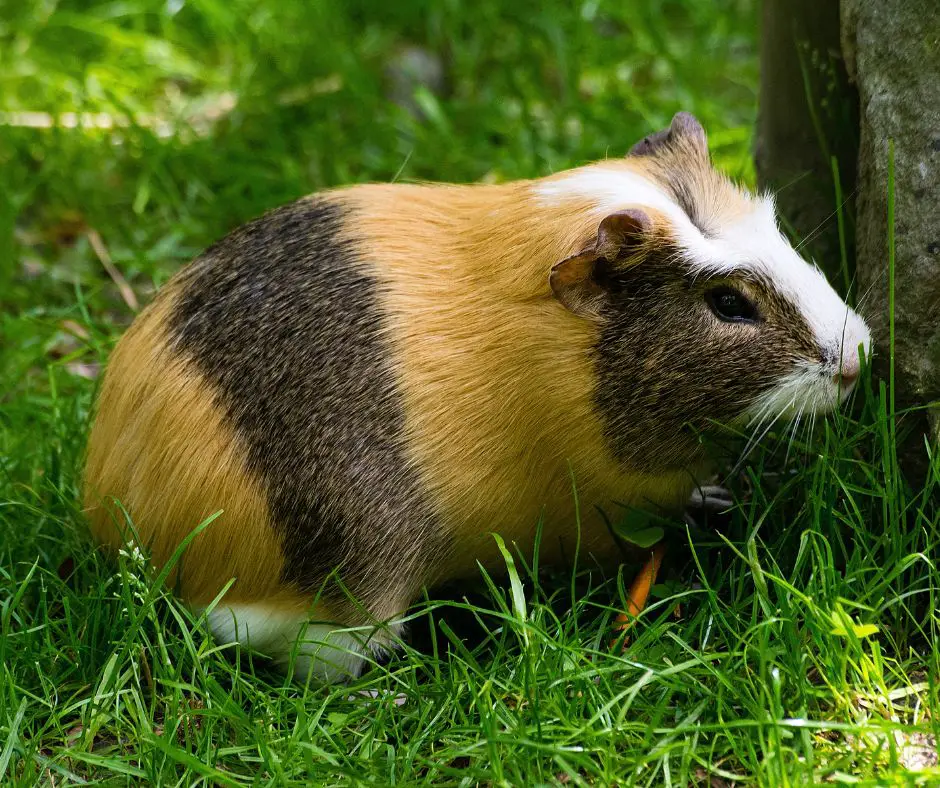
When Should You Worry About Guinea Pig Pee a Lot?
One thing that will surely deny you peace is when your guinea pig is not peeing at all. It’s always a big concern since your furry friend should be peeing about 100 times a day or more.
Furthermore, in situations where guinea pigs urinate more than usual, it’s always an alarming thing. Your little friend needs to take the shortest time before urinating again is 15 minutes.
Guinea pigs that urinate unusually, e.g., after a minimum of 15 minutes, may be suffering from polydipsia and polyuria. The signs associated with these conditions include excessive urination and thirsting endlessly.
It’s also a significant concern if your cavy friend excretes a pee with abnormal color (a different color from yellow).
9 Different Colors of Guinea Pig Pee
It’s not uncommon for the shade of a guinea pig’s pee to change within a day. Note, a piggy’s urine can take nine different shades/colors, and each color tries to explain something.
While some urine shades are typical, others are a warning sign of an illness. I will explain different urine shades in guinea pigs and their meaning below.
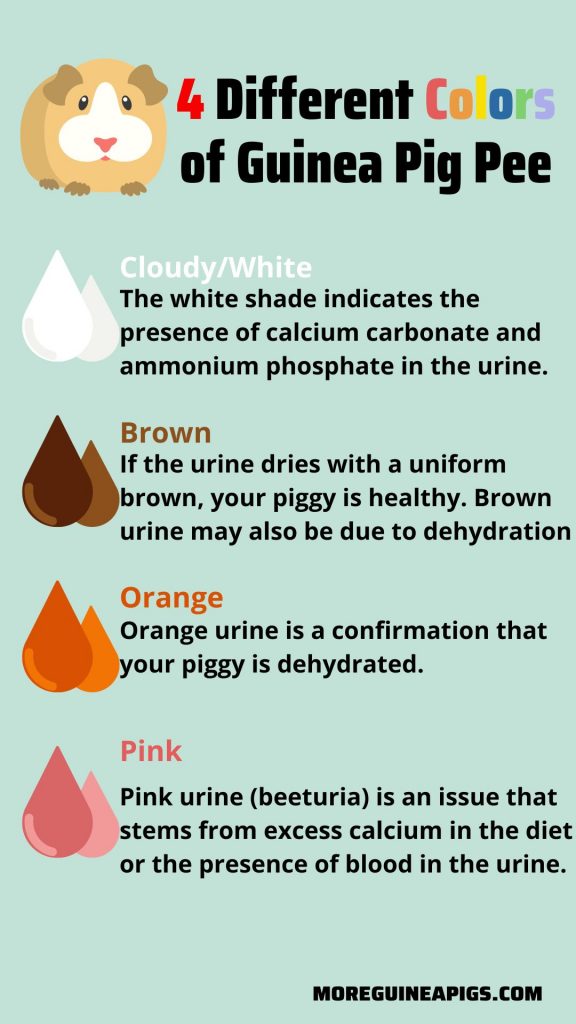
Cloudy/White
Cloudy/white urine is often seen in young guinea pigs, who pass calcium through urine often. The white shade indicates the presence of calcium carbonate and ammonium phosphate in the urine.
To ascertain that the white shades result from calcium excrete, you will notice a gritty like sand texture if you feel the urine in your fingers after it dries.
The presence of calcium in the urine indicates that you’re feeding your guinea pig with excess calcium. You need to avoid feeding your little friend foods rich in calcium and provide plenty of water.
Check out: Why Your Guinea Pig’s Urine Is White?
Brown
Guinea pigs can egest brown urine, and this is not something to puzzle you. Young and old piggies can have this urine shade, and they don’t manifest any discomfort or pain (squeaking); the color emerges from something they ate.
If the urine dries with a uniform brown, your piggy is healthy. However, something is wrong in circumstances where brown urine leaves a darker outer ring or darker center.
The ring or darker center represents blood in the urine; see your vet if that happens. Brown urine may also be due to dehydration. The higher the level of dehydration, the more intense the urine appears.
Remember that guinea pigs have a high affinity for water. They need to drink nearly 100ml of water every day. Provide fresh water in clean water bottles. Guinea pigs don’t drink water from dirty/muddy nozzles.
Orange
Orange is another urine shade observable in guinea pigs. Likewise, orange urine is a confirmation that your piggy is dehydrated.
It’s a typical shade when guinea pigs don’t have enough water in their body. Your little friend needs nothing else except to get sufficient water for drinking.
Another practical approach to correct dehydration is offering vegetables with high water content, such as cucumbers.
Pink
Are you perplexed that guinea pigs can pass pink urine? But it does happen. Pink urine (beeturia) is an issue that stems from excess calcium in the diet or the presence of blood in the urine.
It signifies that blood is present in traces. Because of the blood dilution, the urine obtains a pink shade.
In addition, your guinea pig can urinate pink urine after eating strawberries, blackberries, or cranberries. Carrots and spinach can also cause pink urine due to their high content in beta-carotene.
Bear in mind that it’s not compulsory that your little friend will have beeturia after eating these foods. If your piggy’s urine is pink, but it doesn’t show any signs of weakness, anorexia, or excessive urination, there’s nothing to perplex you.
Antibiotics can also be the reason for pink urine in guinea pigs. If this urine color persists for days, you need a vet to evaluate the urine sample.
Arm & Hammer for Pets Super Absorbent Cage Liners for Guinea Pigs
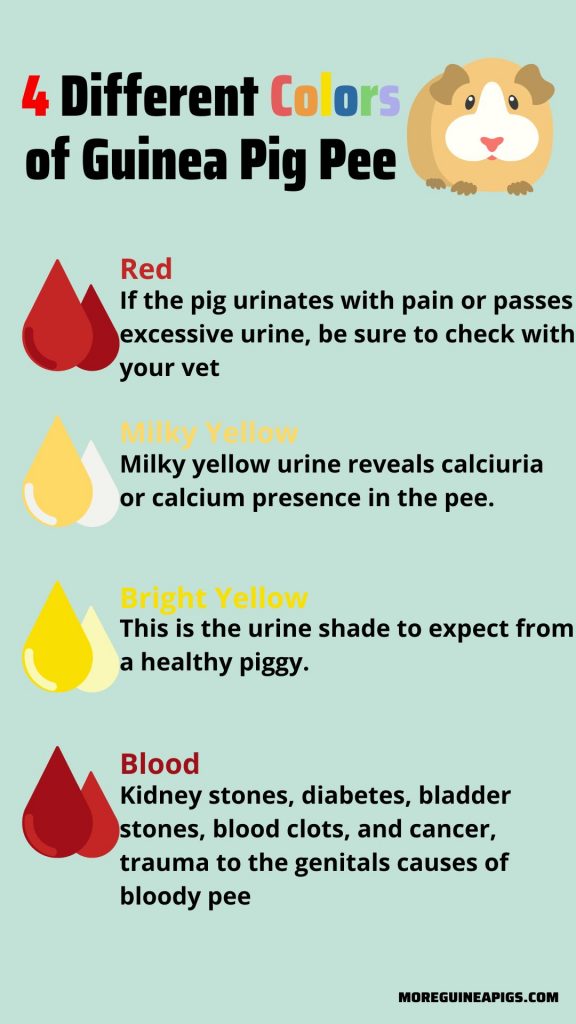
Red
Red urine mostly makes a lot of caretakers panic. The shade may signify something terrible, like urinary issues and reproductive problems in females. It could also be a sign of physical trauma if your little friend fell from a height.
If the pig urinates with pain or passes excessive urine, be sure to check with your vet. Red urine is not always alarming; it can also emanate from the pig consuming particular food like carrots, beetroots, dandelion, or red cabbage.
Moreover, red urine can be due to antibiotic medicines, sudden drop in temperatures during winter, and pigments from the bladder.
Milky Yellow
Milky yellow urine reveals calciuria or calcium presence in the pee. It warns you that your pig is getting excess calcium than the standard rate.
You will need to make some adjustments to your pig’s diet. For instance, consider giving timothy hay with high fiber if you are feeding alfalfa hay.
Also, supply only foods with low calcium. If there is no evident progress within a few days, please check with your veterinarian.
Bright Yellow
As far as your furry friend pees bright yellow urine, it is perfectly fine. This is the urine shade to expect from a healthy piggy.
The pet should eat and drink well and pass its bowel movement regularly and freely. It does not have any health concerns.
Blood
Hematuria defines the presence of blood in the urine. Basically, blood in urine symbolizes the removal of entire or intact red blood cells from the body through urine.
The blood presents itself in the form of smaller traces in clear urine. Hematuria or bloody pee may transpire due to a number of factors, including kidney stones, diabetes, bladder stones, blood clots, and cancer.
Problems with the reproductive organs (in females), trauma to the genitals, and excess calcium intake are also underlying causes of bloody pee.
If your pig pees bloody urine, please ensure to see your vet. The treatment for hematuria varies depending on its root cause.
Bad Smell
You know that urine with a bad smell doesn’t mean that your animal friend is sick. It tells you that your pet’s house needs cleaning. Don’t forget that guinea pigs urinate so much.
Typically, a bad smell in guinea pig urine proceeds from urine that persists for a long time without cleaning. The urea in urine decomposes through bacterial activity and eventually generates ammonia.
Ammonia is foul-smelling, and it’s as bad as it can be. The smell is pungent in houses with inadequate ventilation.
Ammonia damages the inner lining of guinea pigs’ nasal passages and exposes them to respiratory infection.
GuineaDad Liner
Bonus: What Does It Mean When Guinea Pigs Pee on You?
If you are holding or petting your little friend, the chances of the pig wetting your clothes are high. These furry cavies often urinate on humans. They can do it out of the blue or for no particular reason.
Don’t fret if that happens to you; urination is a typical biological process and a necessity for all animals, including guinea pigs. Plus, these pets’ urine is not harmful to humans as long as the pee is free from infection.
But you may be unwelcoming to the idea of your pig peeing on you; it’s a frustrating experience anyway! Here are tricks to prevent your little cavy from urinating on you.

Get Guinea Pig Pee Signal
Most often, guinea pigs don’t pee abruptly. They give some hints that they want to relieve themselves.
Look out for signs such as teeth chattering, nibbling, the pig yanking at your clothes, loud squeaks and wheeks, and pacing and squatting. Those are warning signs that your piggie is about to do something that can soak your clothes.
Keep the Session Short and Watch the Time
I know you enjoy petting your best friend more than anything, and you wish it could last forever. But if you don’t want to get soaked, you need to keep the session short.
The term ‘hold it’ is a foreign concept to guinea pigs. They will relieve themselves anytime they want to and wherever they’ve to go.
The idea of guinea pigs peeing after every 15 minutes is not an alien thing to you now. You can set a timer not to exceed holding them for this time.
Bear in mind that this peeing interval may vary depending on your pet’s age and health status.
Avoid Cuddles Right After Meals
Hey there, don’t be as keen as mustard to cuddle your little best friend right after having its meals. Their metabolism is close to the speed of thought, working incredibly fast.
Do you know the adage that states, “Food in, poop/pee out?” There you go; it works so well in guinea pigs.
So, hold yourself for around 15 minutes to allow your pig to relax after enjoying its meal. In that duration, your little friend will do all its business.
Afterwards, you’re sure to enjoy a reasonable playing time with your pet without worrying that it will spray you.
Create Area for “Potty Purpose”
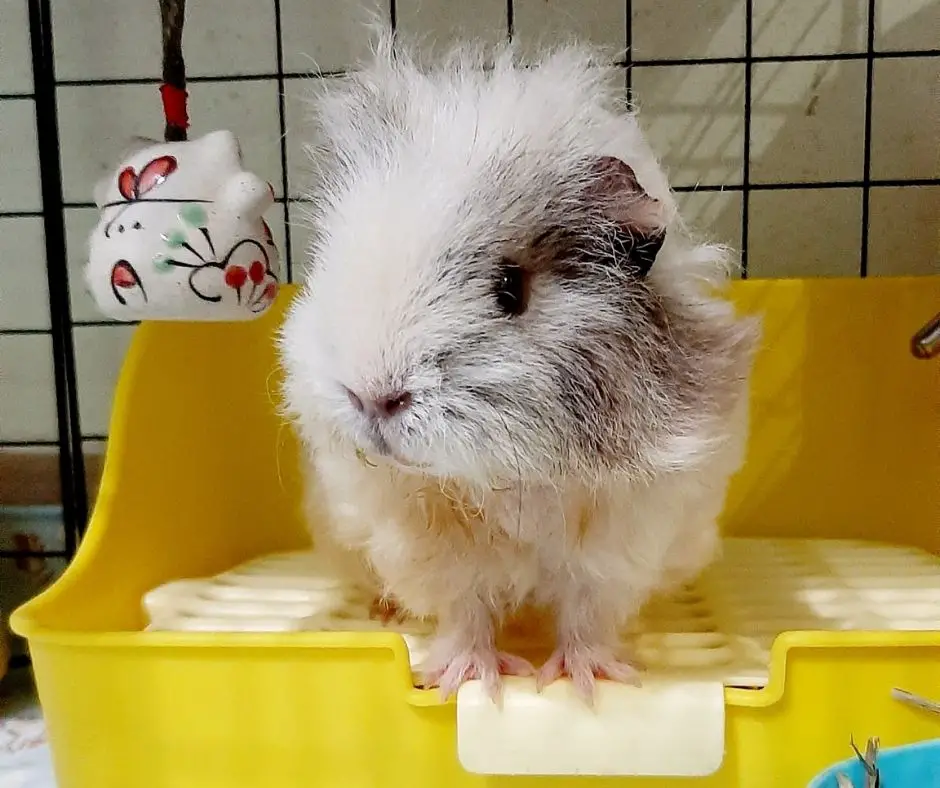
You may also want to train your beloved companion to relieve themselves somewhere other than on you; it’s practical and effective. How do you do this?
It requires you to potty train your little friend. You can do it successfully by observing the following guidelines.
- Create a “kitchen area” in your little buddy’s hutch. The kitchen area is where to find the guinea pig’s water, food bowl, and hay. It motivates the pigs’ instinct to poop and pee where they eat.
- Make sure to fill the “kitchen area” container with beddings, keep the area dark (cover the top of the cage with a blanket below the kitchen area), and don’t relocate this area. Guinea pigs love hiding and eating from dark places where predators can’t spot them.
- Likewise, provide different bedding in the kitchen area from the one you use for the rest of the hutch. That way, your piggy will see the difference between the two areas.
- With such training, your little piggy is likely to associate the kitchen area with pooping/peeing; there is a very little chance it will pee on you.
Also read: How To Potty Train A Guinea Pig
Steer Away from Heavy Water Veggies and Fruits
Feeding your pig heavy water veggies and fruits increases their chances of peeing more frequently due to the high water content in these foodstuffs.
But in case your piggy enjoys them, be sure to supply them in moderation. You should steer away from watery foods like oranges, cucumbers, watermelon, zucchini, peas, bok choy, and celery.
A healthy guinea pig’s diet comprises 80% high-quality hay and only a small portion of fruits, veggies, and pellets.
Also read: Guinea Pig Hay: Everything Need to Know and 4 Top Picks
Conclusion
Guinea pigs can pass nine different colors of urine/pee, including pink, orange, red, bloody, brown, white/cloudy, yellow, and milky yellow. Guinea pig urine shade explains more about their health.
The pee of a healthy piggy is clear/watery, and it should be pale to bright yellow. On the other hand, brown and orange urine is a sign of dehydration; it tells you that your little pet is not getting adequate water.
Guinea pig urine is not toxic to human beings. However, some piggies are carriers of E. cuniculi, and they shed the spores of this pathogen in urine.
The disease rarely affects people with a healthy immune system, but those with compromised immune systems are more likely to contract this infection.
